Abstract
Six rats with electrodes chronically implanted in septal or hypothalamic sites were tested for intracranial reinforcement on a progressive fixed-ratio schedule. Two variations of this schedule were also examined and compared. Functions relating the highest level of stable fixed-ratio responding to a wide range of stimulus currents were, unlike those derived from continuous reinforcement rates, monotonic at all stimulation sites tested. One of the procedures described, in particular, is quite sensitive to intracranial reinforcement parameters, provides a reliable technique for within-session assays of these parameters, and successfully avoids many problems commonly encountered with administration of central stimulation on a continuous reinforcement schedule.
Full text
PDF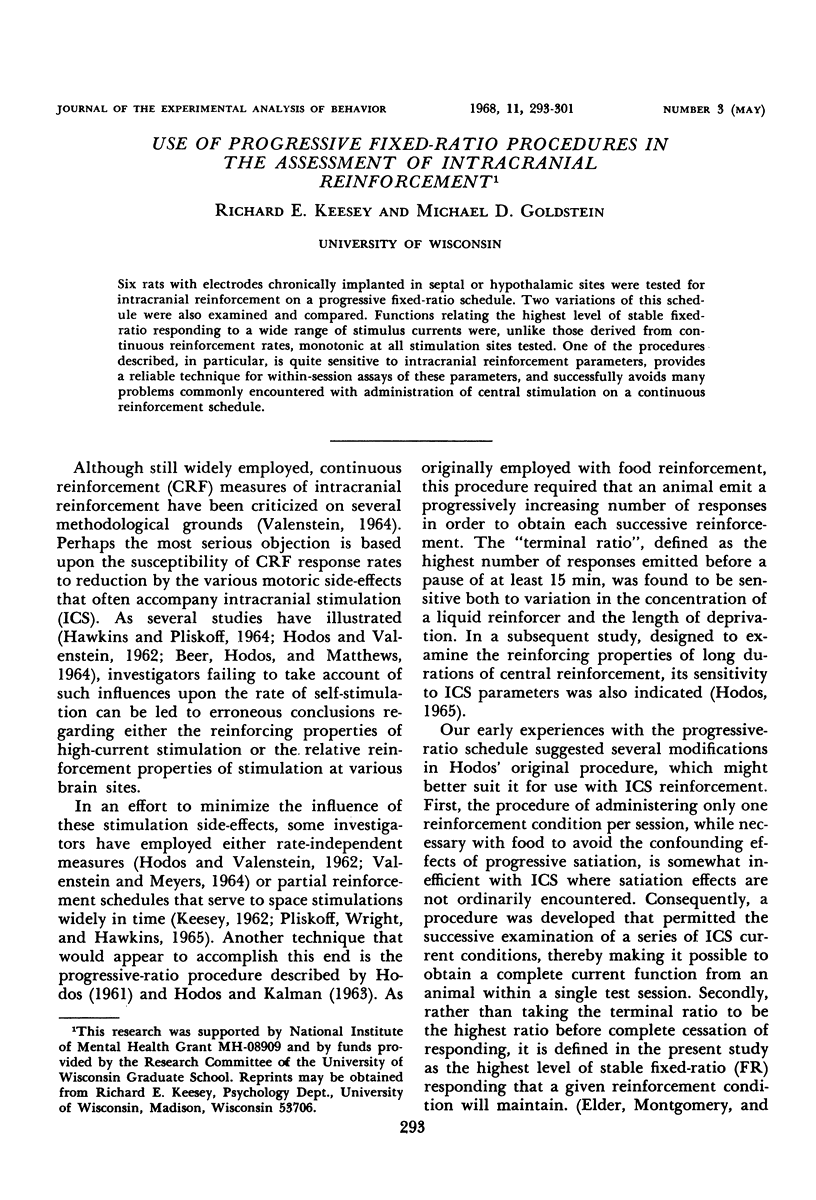
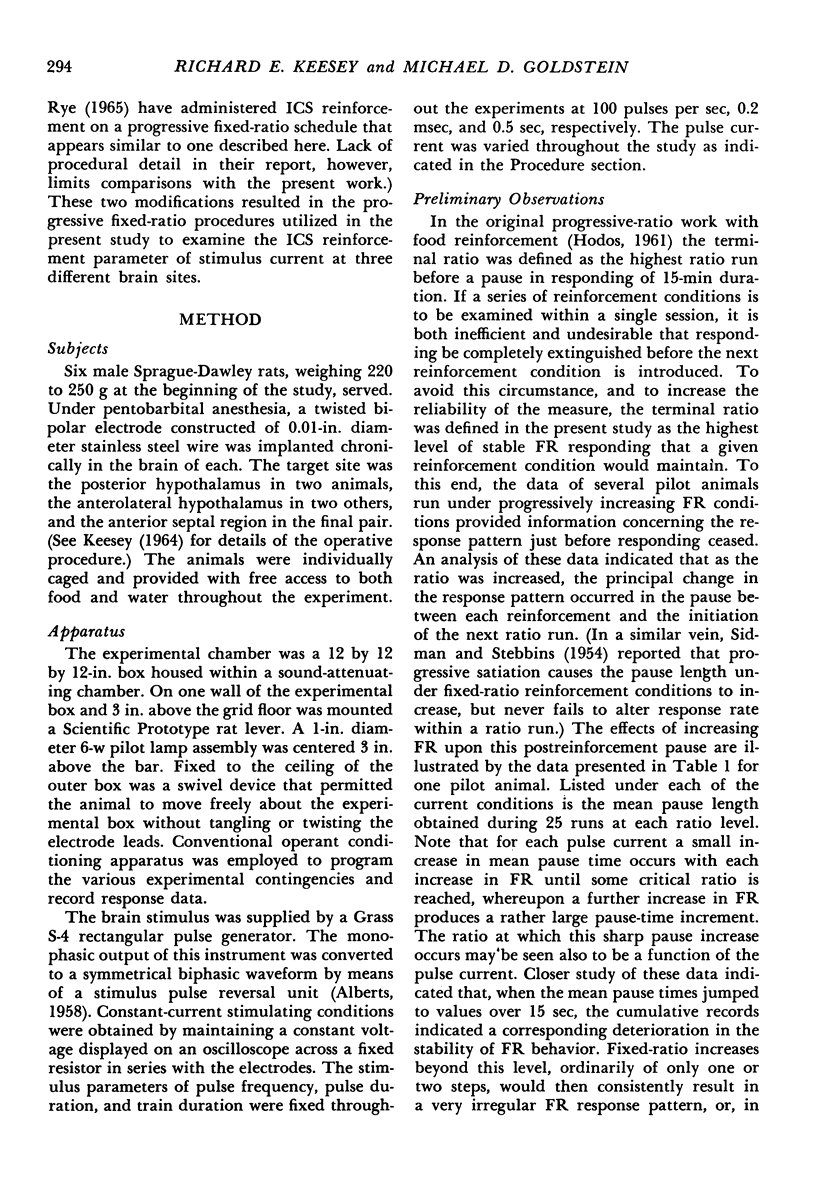
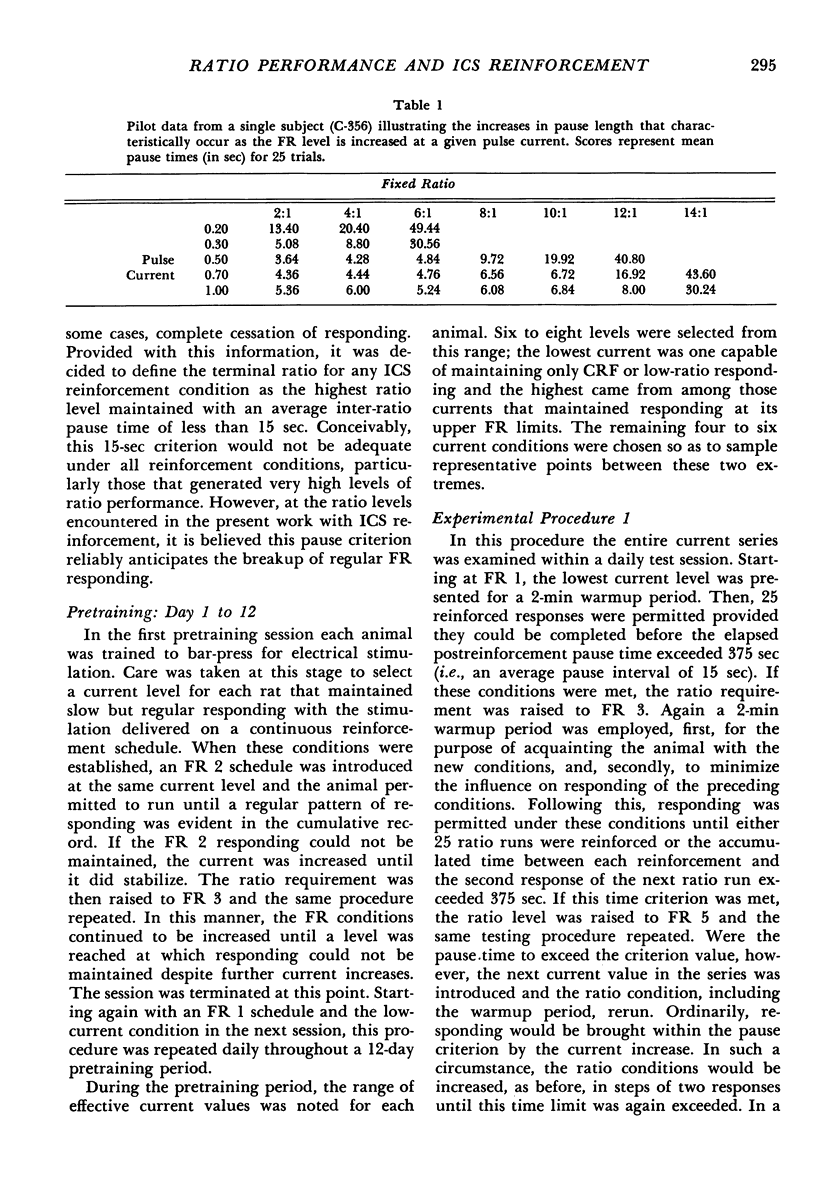
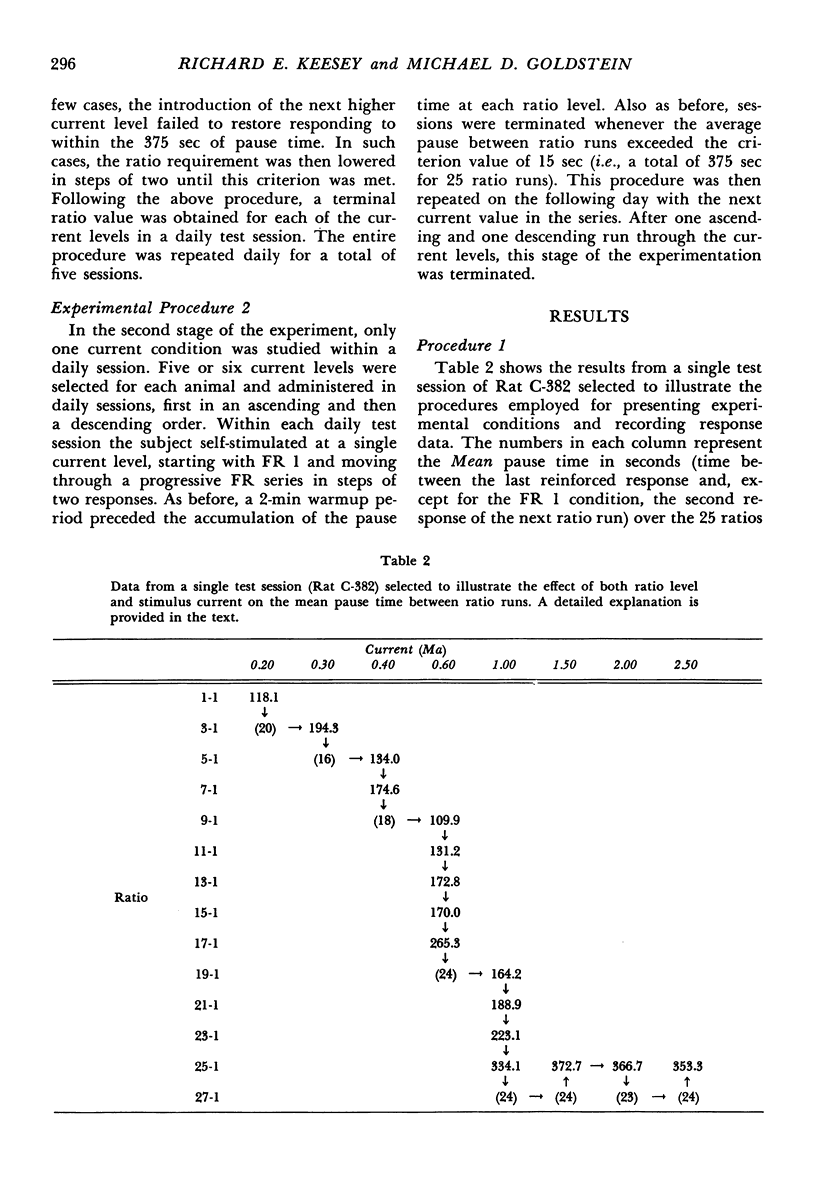
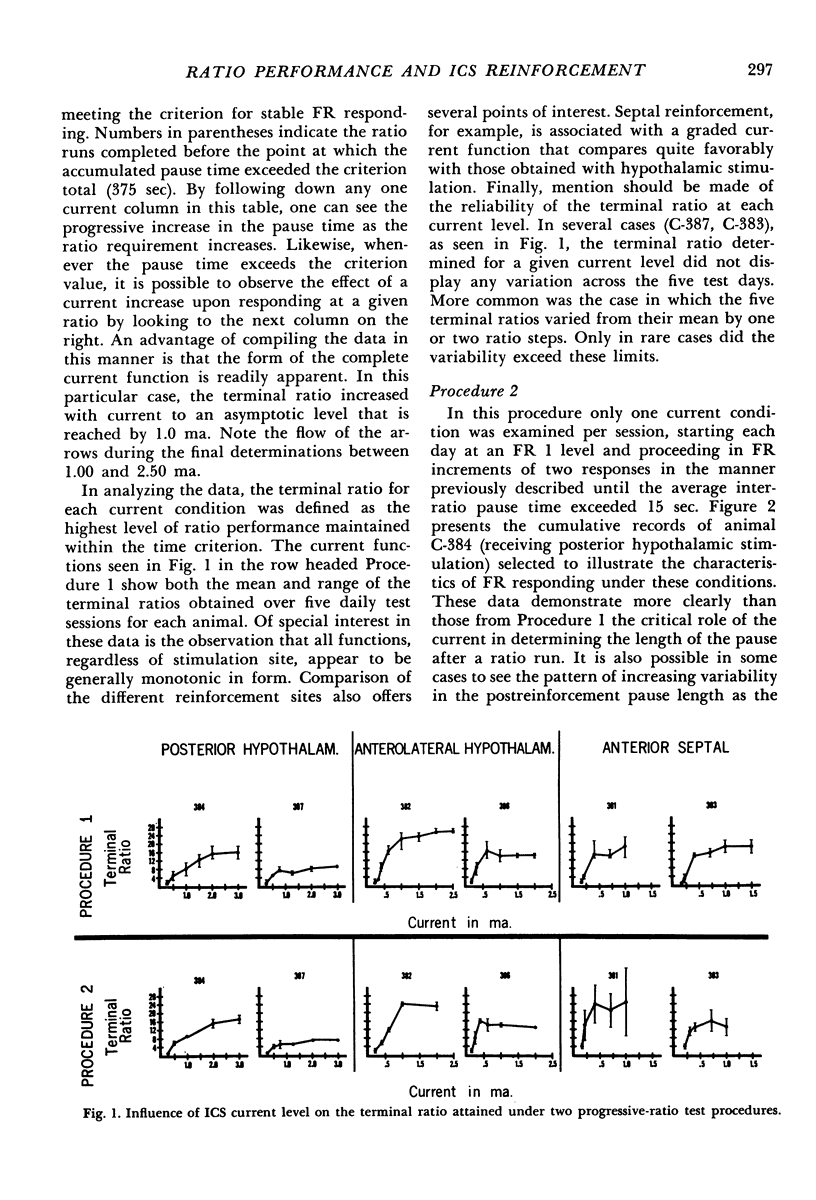
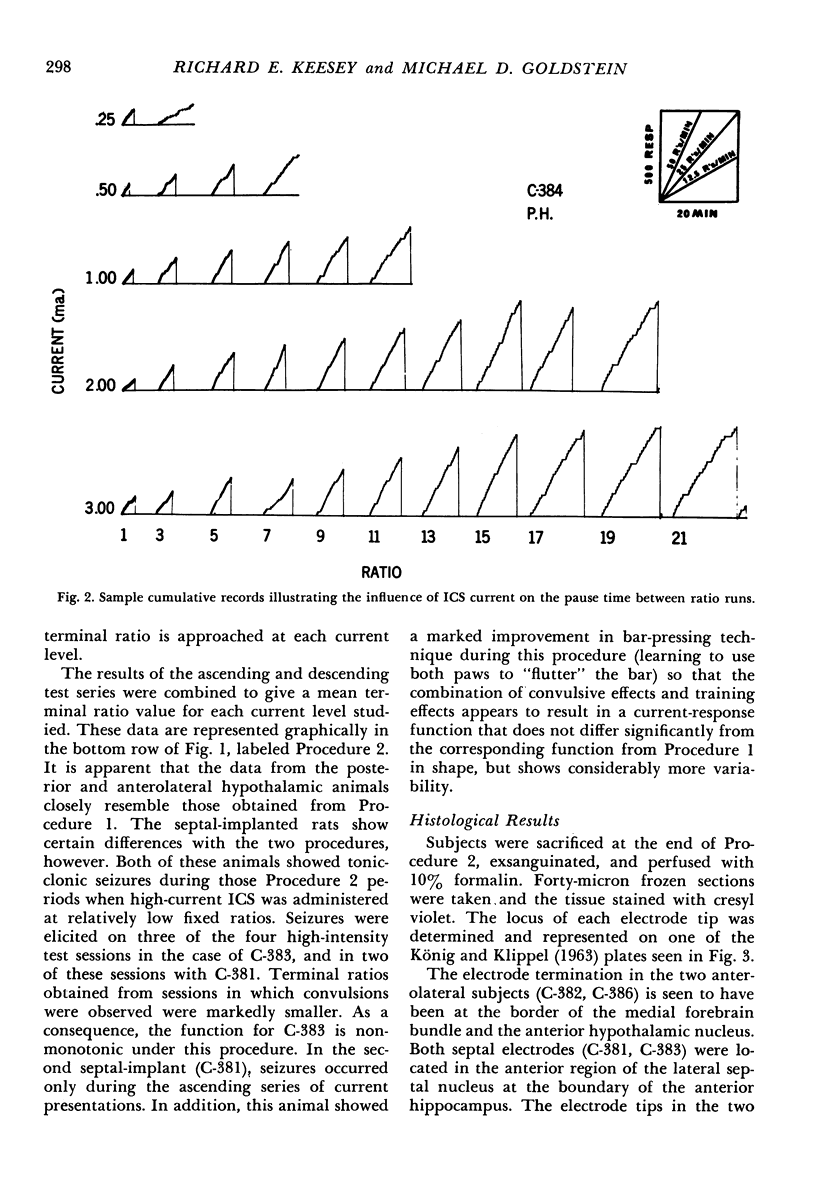

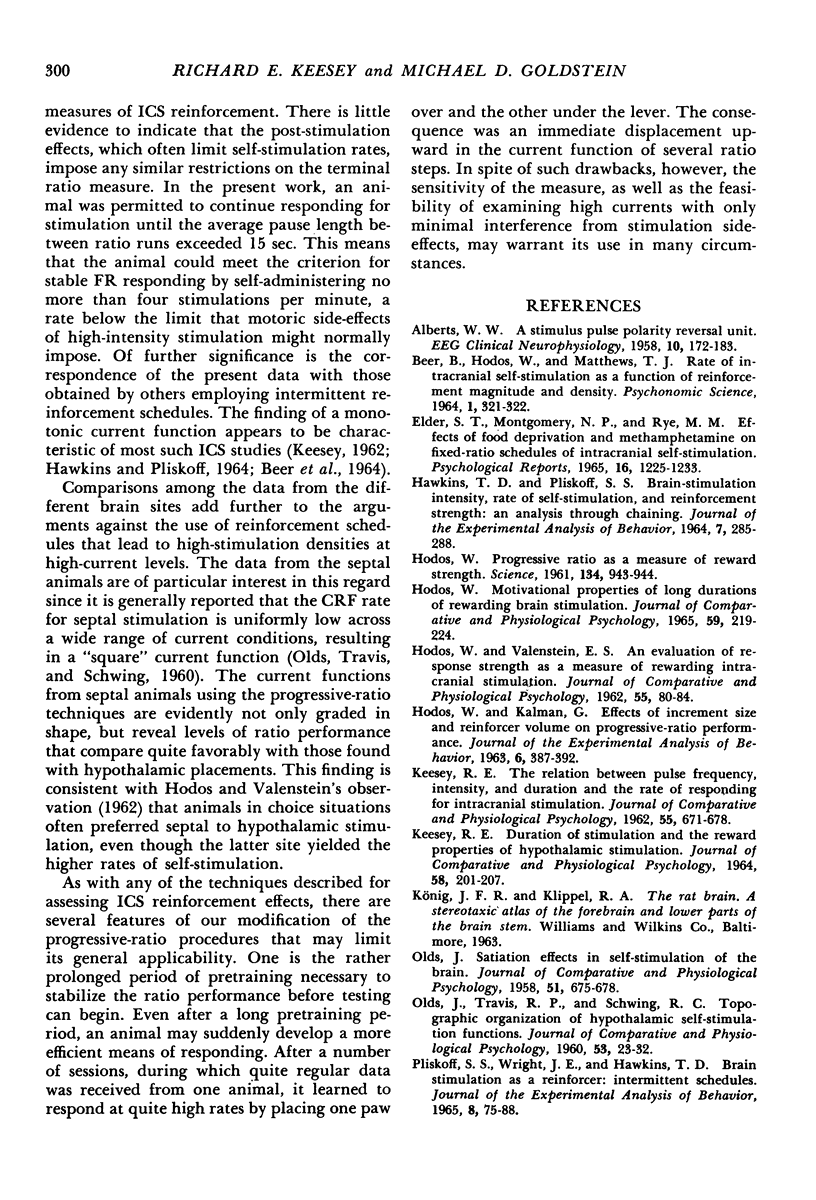
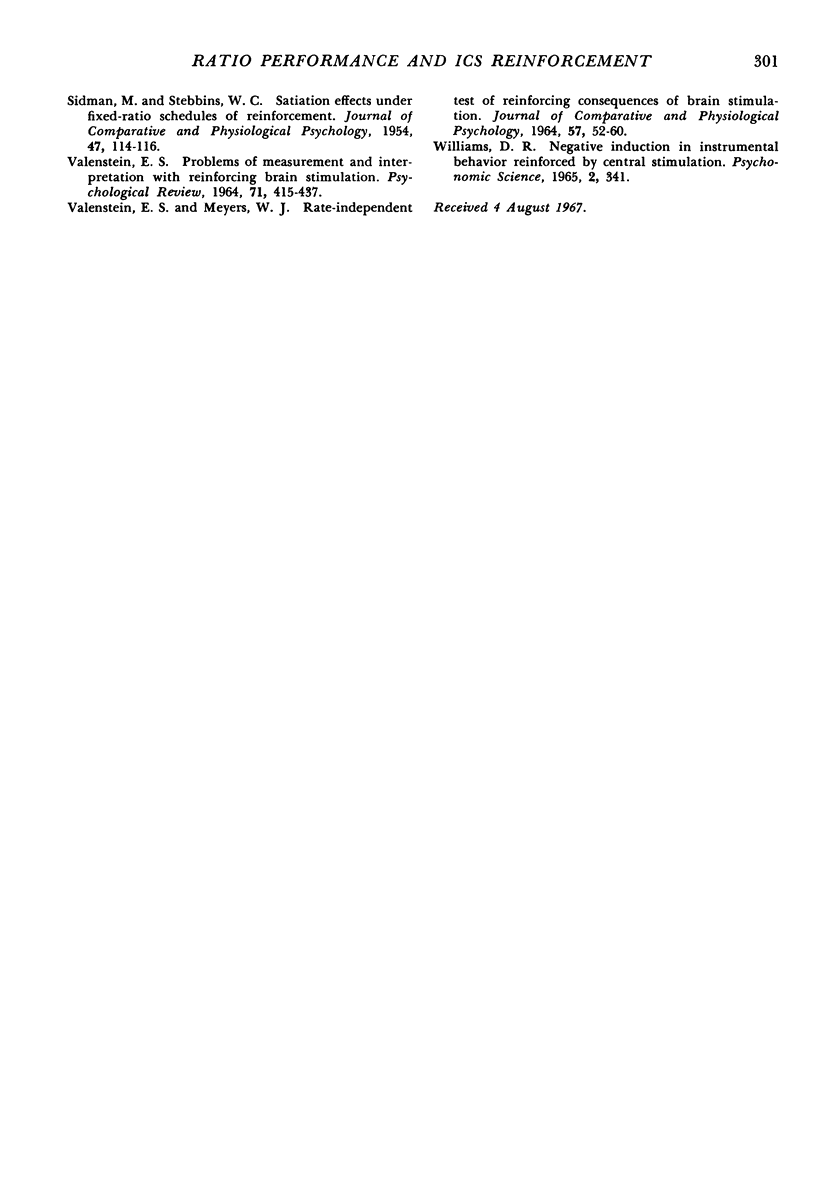
Selected References
These references are in PubMed. This may not be the complete list of references from this article.
- ELDER R. L., BEERS R. F., Jr NONPHOTOREACTIVATING REPAIR OF ULTRAVIOLET LIGHT-DAMAGED MICROCOCCUS LYSODEIKTICUS CELLS. J Bacteriol. 1965 May;89:1225–1230. doi: 10.1128/jb.89.5.1225-1230.1965. [DOI] [PMC free article] [PubMed] [Google Scholar]
- HAWKINS T. D., PLISKOFF S. S. BRAIN-STIMULATION INTENSITY, RATE OF SELF-STIMULATION, AND REINFORCEMENT STRENGTH: AN ANALYSIS THROUGH CHAINING. J Exp Anal Behav. 1964 Jul;7:285–288. doi: 10.1901/jeab.1964.7-285. [DOI] [PMC free article] [PubMed] [Google Scholar]
- HODOS W., KALMAN G. Effects of increment size and reinforcer volume on progressive ratio performance. J Exp Anal Behav. 1963 Jul;6:387–392. doi: 10.1901/jeab.1963.6-387. [DOI] [PMC free article] [PubMed] [Google Scholar]
- HODOS W. MOTIVATIONAL PROPERTIES OF LONG DURATIONS OF REWARDING BRAIN STIMULATION. J Comp Physiol Psychol. 1965 Apr;59:219–224. doi: 10.1037/h0021818. [DOI] [PubMed] [Google Scholar]
- HODOS W. Progressive ratio as a measure of reward strength. Science. 1961 Sep 29;134(3483):943–944. doi: 10.1126/science.134.3483.943. [DOI] [PubMed] [Google Scholar]
- HODOS W., VALENSTEIN E. S. An evaluation of response rate as a measure of rewarding intracranial stimulation. J Comp Physiol Psychol. 1962 Feb;55:80–84. doi: 10.1037/h0047681. [DOI] [PubMed] [Google Scholar]
- KEESEY R. E. DURATION OF STIMULATION AND THE REWARD PROPERTIES OF HYPOTHALAMIC STIMULATION. J Comp Physiol Psychol. 1964 Oct;58:201–207. doi: 10.1037/h0043134. [DOI] [PubMed] [Google Scholar]
- KEESEY R. E. The relation between pulse frequency, intensity, and duration and the rate of responding for intracranial stimulation. J Comp Physiol Psychol. 1962 Oct;55:671–678. doi: 10.1037/h0049222. [DOI] [PubMed] [Google Scholar]
- OLDS J. Satiation effects in self-stimulation of the brain. J Comp Physiol Psychol. 1958 Dec;51(6):675–678. doi: 10.1037/h0039616. [DOI] [PubMed] [Google Scholar]
- OLDS J., TRAVIS R. P., SCHWING R. C. Topographic organization of hypothalamic self-stimulation functions. J Comp Physiol Psychol. 1960 Feb;53:23–32. doi: 10.1037/h0039776. [DOI] [PubMed] [Google Scholar]
- PLISKOFF S. S., WRIGHT J. E., HAWKINS T. D. BRAIN STIMULATION AS A REINFORCER: INTERMITTENT SCHEDULES. J Exp Anal Behav. 1965 Mar;8:75–88. doi: 10.1901/jeab.1965.8-75. [DOI] [PMC free article] [PubMed] [Google Scholar]
- SIDMAN M., STEBBINS W. C. Satiation effects under fixed-ratio schedules of reinforcement. J Comp Physiol Psychol. 1954 Apr;47(2):114–116. doi: 10.1037/h0054127. [DOI] [PubMed] [Google Scholar]
- VALENSTEIN E. S., MEYERS W. J. RATE-INDEPENDENT TEST OF REINFORCING CONSEQUENCES OF BRAIN STIMULATION. J Comp Physiol Psychol. 1964 Feb;57:52–60. doi: 10.1037/h0048638. [DOI] [PubMed] [Google Scholar]
- VALENSTEIN E. S. PROBLEMS OF MEASUREMENT AND INTERPRETATION WITH REINFORCING BRAIN STIMULATION. Psychol Rev. 1964 Nov;71:415–437. doi: 10.1037/h0040694. [DOI] [PubMed] [Google Scholar]


